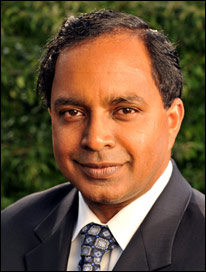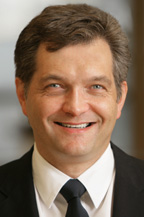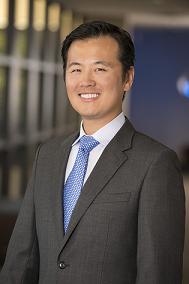Three spine surgeons share strategies for creating and maintaining an effective patient-centric business model at spine practices. 1. Shrink patient wait times. Not long ago it was common for patients to wait an hour or more past their scheduled appointment time to see a physician. "Now, patient expectations are higher," says Douglas Won, MD, founder and director of Minimally Invasive SpineCARE in Dallas. At his practice, if the office is running behind schedule the front desk will call patients ahead of time so they can arrive later when they can been seen right away.
 "It starts with timing. We are very careful about getting patients in quickly," says Kenneth Hansraj, MD, of New York Spine Surgery and Rehabilitation Medicine in Poughkeepsie, N.Y. Both the patients' time and the staff's time is valuable. Based on this understanding, New York Spine Surgery and Rehabilitation Medicine adheres to a comprehensive intake method. Patients give complete histories before seeing a physician. The time a patient spends with Dr. Hansraj is face time, not time spent gathering a patient's background information.
"It starts with timing. We are very careful about getting patients in quickly," says Kenneth Hansraj, MD, of New York Spine Surgery and Rehabilitation Medicine in Poughkeepsie, N.Y. Both the patients' time and the staff's time is valuable. Based on this understanding, New York Spine Surgery and Rehabilitation Medicine adheres to a comprehensive intake method. Patients give complete histories before seeing a physician. The time a patient spends with Dr. Hansraj is face time, not time spent gathering a patient's background information.
As with any physician practice there are days when timing doesn't run smoothly, but Dr. Hansraj points out with the complexity of spine cases this can be even more of an issue. While dedicated to seeing patients quickly, Dr. Hansraj does not believe in rushing a patient out of the office. "Some patients require 20 minutes, some require two hours," he says.
"The biggest challenge and the biggest reward in a patient-centric business model is timing. Time can be difficult to manage, but once a practice implements a system of doing so, the benefits are tremendous," says Dr. Hansraj. Patients love to be seen in and out on time, physicians and staff can leave earlier and it costs less when everyone is home on time.
 2. Give patients multiple treatment options if possible. Roger Härtl, MD, chief of spinal surgery and neurotrauma at Weill Cornell Brain and Spine Center in New York, concentrates on providing his patients with treatment options.
2. Give patients multiple treatment options if possible. Roger Härtl, MD, chief of spinal surgery and neurotrauma at Weill Cornell Brain and Spine Center in New York, concentrates on providing his patients with treatment options.
"We need to stress to the patient that non-operative treatment is the best initial choice," he says. Though this is a key tenet of patient-centric care at a spine practice, it is also an inherent challenge to convince patients that there are other options. "Many patients assume that if they're seeing a surgeon, they must need surgery. But that's not always the case - I often refer patients first to physical therapy, or pain management, before considering them as candidates for surgery."
Dr. Härtl stresses the importance of understanding the relationship between pain and psychology. Cognitive therapy and psychological intervention can be just as important as any treatment when it comes to addressing and treating the root cause of a patient's pain.
 3. Keep flexible hours to accommodate additional patients. Medical practice is increasingly becoming a service industry. Minimally Invasive SpineCARE has multiple locations and Dr. Won uses this to his advantage. "We expand office hours in order to see patients. If you are in serious pain you can't wait weeks to see a physician," said Dr. Won. Patients are able to make an appointment with an available physician at the time and location most convenient for them.
3. Keep flexible hours to accommodate additional patients. Medical practice is increasingly becoming a service industry. Minimally Invasive SpineCARE has multiple locations and Dr. Won uses this to his advantage. "We expand office hours in order to see patients. If you are in serious pain you can't wait weeks to see a physician," said Dr. Won. Patients are able to make an appointment with an available physician at the time and location most convenient for them.
4. Appoint a staff member to coordinate patient schedules. Spine care can be very fragmented. Patients are seen at different locations by different specialists. Between diagnostic, therapy, physician and surgeon appointments, it easy for a patient to become confused.
One of the important elements driving patient-centered care at Weill Cornell Brain and Spine Center is the spine center navigator. This navigator is a nurse that Dr. Härtl described as "the glue between all of the elements of a spine center." The navigator directs patients through the entire center and places them as the central figures of physician care.
Dr Won's office also has a staff member in charge of patient coordination. "We have a coordinator overseeing patient care and a patient log. Our coordinator follows up to make sure a patient understands how to properly schedule all appointments and how to get to each one," he says.
On their own, patients may not follow up and this can lead to treatment gaps. If your staff tracks and follows up on each individual's treatment, patient outcomes may noticeably improve.
5. Instill a patient-focused culture for the whole staff. At the multidisciplinary environment of Weill Cornell Brain and Spine Center, physicians come together to create a patient-centric care model. The physicians hold regular conferences to discuss patients and frequently see patients together.
Dr. Hansraj and his team carefully track the day-to-day time schedule. The practice employs internal "runners" that prepare each patient before meeting with Dr. Hansraj. He meets with the runners at the end of each day to discuss how well timing was managed that day and what could be done better the next. "My whole team works together. We constantly listen to each member for where we can improve," says Dr. Hansraj.
Dr. Won also stresses a patient-centric culture at his practice. "All staff members that come into contact with a patient need to keep in mind that he or she deserves A+ service. Patients expect that of a physician's office now. We should meet those expectations," says Dr. Won. "You need to develop a culture of excellent patient care from the top down."
Train new hires to provide the best possible patient care and experience. Every element of your practice from medical assistants to the billing department should be geared towards patient-centric care.
6. Always look for ways to improve. For Dr. Härtl, a patient-centered method of practice is a never-ending process. "Technology is always changing and giving us new options," he says. Within the past few years Dr. Härtl and his colleagues gained the ability to electronically transfer image files between one another. As a spine center with a large number of international patients, this saves a great deal of time and allows surgeons to focus on patients instead of struggling to obtain their records.
Though files can be in different formats at different institutes, Dr. Härtl says the Weill Cornell Brain and Spine Institute is now endeavoring to immediately enter a patients files into the center's system following initial contact.
Dr. Won also acknowledges that this business model can be time consuming and calls for additional resources, but he suggests looking at it as an investment. Satisfied patients are the best marketing plan a practice can have. They will have a positive experience to share with their referring physicians and the people they know.
The advantage of a patient-centric business model is simple: "Satisfying patient need is the number one benefit," Dr. Härtl says.
More Articles on Spine:
6 Ways to Increase Spine Practice Profits
Why Outpatient Spine Surgery: 3 Big Reasons
5 Quick Ways to Grow Spine Surgeon Practices
 "It starts with timing. We are very careful about getting patients in quickly," says Kenneth Hansraj, MD, of New York Spine Surgery and Rehabilitation Medicine in Poughkeepsie, N.Y. Both the patients' time and the staff's time is valuable. Based on this understanding, New York Spine Surgery and Rehabilitation Medicine adheres to a comprehensive intake method. Patients give complete histories before seeing a physician. The time a patient spends with Dr. Hansraj is face time, not time spent gathering a patient's background information.
"It starts with timing. We are very careful about getting patients in quickly," says Kenneth Hansraj, MD, of New York Spine Surgery and Rehabilitation Medicine in Poughkeepsie, N.Y. Both the patients' time and the staff's time is valuable. Based on this understanding, New York Spine Surgery and Rehabilitation Medicine adheres to a comprehensive intake method. Patients give complete histories before seeing a physician. The time a patient spends with Dr. Hansraj is face time, not time spent gathering a patient's background information. As with any physician practice there are days when timing doesn't run smoothly, but Dr. Hansraj points out with the complexity of spine cases this can be even more of an issue. While dedicated to seeing patients quickly, Dr. Hansraj does not believe in rushing a patient out of the office. "Some patients require 20 minutes, some require two hours," he says.
"The biggest challenge and the biggest reward in a patient-centric business model is timing. Time can be difficult to manage, but once a practice implements a system of doing so, the benefits are tremendous," says Dr. Hansraj. Patients love to be seen in and out on time, physicians and staff can leave earlier and it costs less when everyone is home on time.
 2. Give patients multiple treatment options if possible. Roger Härtl, MD, chief of spinal surgery and neurotrauma at Weill Cornell Brain and Spine Center in New York, concentrates on providing his patients with treatment options.
2. Give patients multiple treatment options if possible. Roger Härtl, MD, chief of spinal surgery and neurotrauma at Weill Cornell Brain and Spine Center in New York, concentrates on providing his patients with treatment options. "We need to stress to the patient that non-operative treatment is the best initial choice," he says. Though this is a key tenet of patient-centric care at a spine practice, it is also an inherent challenge to convince patients that there are other options. "Many patients assume that if they're seeing a surgeon, they must need surgery. But that's not always the case - I often refer patients first to physical therapy, or pain management, before considering them as candidates for surgery."
Dr. Härtl stresses the importance of understanding the relationship between pain and psychology. Cognitive therapy and psychological intervention can be just as important as any treatment when it comes to addressing and treating the root cause of a patient's pain.
 3. Keep flexible hours to accommodate additional patients. Medical practice is increasingly becoming a service industry. Minimally Invasive SpineCARE has multiple locations and Dr. Won uses this to his advantage. "We expand office hours in order to see patients. If you are in serious pain you can't wait weeks to see a physician," said Dr. Won. Patients are able to make an appointment with an available physician at the time and location most convenient for them.
3. Keep flexible hours to accommodate additional patients. Medical practice is increasingly becoming a service industry. Minimally Invasive SpineCARE has multiple locations and Dr. Won uses this to his advantage. "We expand office hours in order to see patients. If you are in serious pain you can't wait weeks to see a physician," said Dr. Won. Patients are able to make an appointment with an available physician at the time and location most convenient for them. 4. Appoint a staff member to coordinate patient schedules. Spine care can be very fragmented. Patients are seen at different locations by different specialists. Between diagnostic, therapy, physician and surgeon appointments, it easy for a patient to become confused.
One of the important elements driving patient-centered care at Weill Cornell Brain and Spine Center is the spine center navigator. This navigator is a nurse that Dr. Härtl described as "the glue between all of the elements of a spine center." The navigator directs patients through the entire center and places them as the central figures of physician care.
Dr Won's office also has a staff member in charge of patient coordination. "We have a coordinator overseeing patient care and a patient log. Our coordinator follows up to make sure a patient understands how to properly schedule all appointments and how to get to each one," he says.
On their own, patients may not follow up and this can lead to treatment gaps. If your staff tracks and follows up on each individual's treatment, patient outcomes may noticeably improve.
5. Instill a patient-focused culture for the whole staff. At the multidisciplinary environment of Weill Cornell Brain and Spine Center, physicians come together to create a patient-centric care model. The physicians hold regular conferences to discuss patients and frequently see patients together.
Dr. Hansraj and his team carefully track the day-to-day time schedule. The practice employs internal "runners" that prepare each patient before meeting with Dr. Hansraj. He meets with the runners at the end of each day to discuss how well timing was managed that day and what could be done better the next. "My whole team works together. We constantly listen to each member for where we can improve," says Dr. Hansraj.
Dr. Won also stresses a patient-centric culture at his practice. "All staff members that come into contact with a patient need to keep in mind that he or she deserves A+ service. Patients expect that of a physician's office now. We should meet those expectations," says Dr. Won. "You need to develop a culture of excellent patient care from the top down."
Train new hires to provide the best possible patient care and experience. Every element of your practice from medical assistants to the billing department should be geared towards patient-centric care.
6. Always look for ways to improve. For Dr. Härtl, a patient-centered method of practice is a never-ending process. "Technology is always changing and giving us new options," he says. Within the past few years Dr. Härtl and his colleagues gained the ability to electronically transfer image files between one another. As a spine center with a large number of international patients, this saves a great deal of time and allows surgeons to focus on patients instead of struggling to obtain their records.
Though files can be in different formats at different institutes, Dr. Härtl says the Weill Cornell Brain and Spine Institute is now endeavoring to immediately enter a patients files into the center's system following initial contact.
Dr. Won also acknowledges that this business model can be time consuming and calls for additional resources, but he suggests looking at it as an investment. Satisfied patients are the best marketing plan a practice can have. They will have a positive experience to share with their referring physicians and the people they know.
The advantage of a patient-centric business model is simple: "Satisfying patient need is the number one benefit," Dr. Härtl says.
More Articles on Spine:
6 Ways to Increase Spine Practice Profits
Why Outpatient Spine Surgery: 3 Big Reasons
5 Quick Ways to Grow Spine Surgeon Practices


